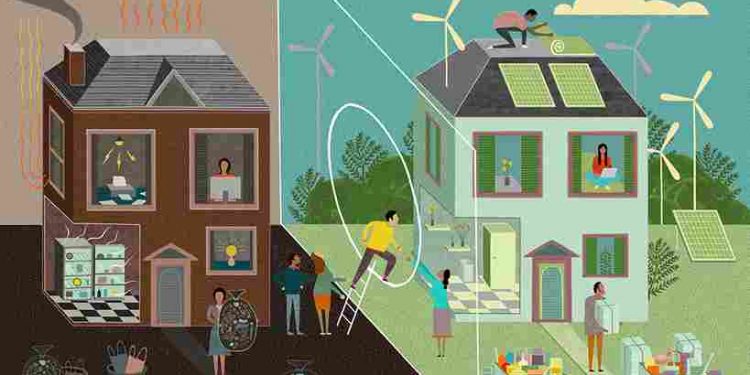As mechanical systems age, they may accumulate harmful gases and vapors that can severely affect their performance. Over time, degraded system functionality can lead to costly repairs and unexpected downtime.
Fortunately, there are effective gas and vapor removal methods that can help prevent blockages and failures, reduce repair expenses, extend component lifespan, and improve overall efficiency. For example, with the help of Vacuum Pumps, dry and oil-sealed systems can be effectively purged of contaminants, helping to maintain optimal performance.
Understanding Common Contaminants
Understanding the types of contaminants that can accumulate in mechanical systems is pivotal for their effective removal. Predominantly, these constituents can be categorized into three groups:
- Inert Gases: These are gases like nitrogen, helium, and argon, which do not readily react with other substances within the system. However, their accumulation can lead to pressure imbalances, reducing system efficiency.
- Reactive Gases: Gases like oxygen, hydrogen sulfide, and sulfur hexafluoride are reactive and can cause corrosion or other damaging chemical reactions if left unchecked in systems.
- Vapors: Certain systems may accumulate vapors from substances like water, oil, or other operational fluids. Over time, these can condense into liquid or solid deposits, causing blockages and other mechanical issues.
Preventing Blockages and Failures
Proactive maintenance practices are your best allies to keep your system running like a well-oiled machine and prevent costly downtime. Think of it as a regular health check-up for your system.One of the simplest yet most effective methods is scheduled filter replacements. Filters act like the mechanical system’s lungs, filtering out contaminants from the air that could otherwise clog the system’s inner workings. Regularly replacing them is akin to taking deep, purifying breaths, ensuring only clean air enters the system.
Similarly, pressure relief techniques serve to maintain a healthy balance in the system, much like maintaining a balanced diet for good health. Excessive pressure build-up caused by gases or vapors can be harmful to the system. Pressure relief methods, such as using appropriate venting or relief valves, can help alleviate this pressure, ensuring the system continues to operate at its peak potential. Leveraging Different Removal Methods
Each system is unique, much like a fingerprint, and so are its contaminant extraction needs. That’s where the power of diversity comes in – having various removal methods at our disposal allows us to optimize contaminant removal in a way that best suits each system.
Centrifugal Separation: Imagine a spinning top; the faster it spins, the more it throws off anything trying to cling to it. That’s essentially the principle behind centrifugal separation. It uses the force of rapid rotation to separate gases and vapors based on their densities. Perfect for systems with heavier contaminants, it’s like having a personal fitness trainer who ensures no unwanted particles linger longer than necessary.
Adsorption Filtration: Have you ever used a sponge to soak up a spill? That’s adsorption for you! Adsorption filtration works like a thirsty sponge, sticking and holding onto contaminant particles as the gas or vapor passes through. It’s your system’s best friend on a rainy day, soaking up all the contaminants and keeping your system clean and efficient.
Cryogenic Condensation: This is your go-to method for those stubborn, hard-to-remove gases. Using extremely low temperatures lures the contaminants into settling as liquids or solids, making them much easier to remove. It’s like inviting your contaminants to a surprise party – the only surprise is that they’re the ones who end up leaving!
Monitoring Purge Effectiveness Over Time:
To keep your system functioning at peak performance, you must consistently measure and track the effectiveness of your purge techniques. Think of it like training for a marathon – you wouldn’t just run the race without preparing and tracking your progress, would you?
Baseline Testing: Start with baseline testing. This is your ‘before’ picture that you can compare to your ‘after’ once your removal techniques are in place. Baseline testing assesses the initial volume and type of contaminants in your system, which can be done using various scientific methods. Consider this step as your system’s health check-up – it lets you know what you’re dealing with and helps you choose the most effective removal techniques.
Establishing KPIs: Key Performance Indicators (KPIs) are like your system’s personal fitness goals. These could include measures such as contaminant reduction rate, system efficiency, or maintenance costs. By establishing clear KPIs, you have a target to aim for and a way to measure your progress.
Documenting Removal Rates: Don’t forget to keep a record! Documenting removal rates over time is like marking your height on a wall as you grow – it shows you how far you’ve come and what’s left to achieve. This documentation can help you adjust your strategies as needed and can also be a valuable tool in demonstrating the effectiveness of your efforts to stakeholders. Considering Lifecycle Cost Factors:
When we think about the cost of a system, it’s much like shopping for a new car. You wouldn’t just consider the sticker price, would you? What about insurance, maintenance, gas mileage, and even the cost of those little pine tree air fresheners?
Similarly, the total cost of ownership for your removal investments isn’t just about the upfront purchase price. It’s about considering the system’s entire lifecycle, including reduced repair expenses, extended component lifespan, and efficiency gains. Think of this as your gas mileage – how much bang for your buck are you getting in the long run?
Reduced repair expenses are like keeping your car in good shape so it doesn’t break down on you. Extended component lifespan is like having a car that runs smoothly for miles without needing a new part. And efficiency gains? That’s cruising along the highway at a good pace without stopping for gas.
Follow Techdee for more!





